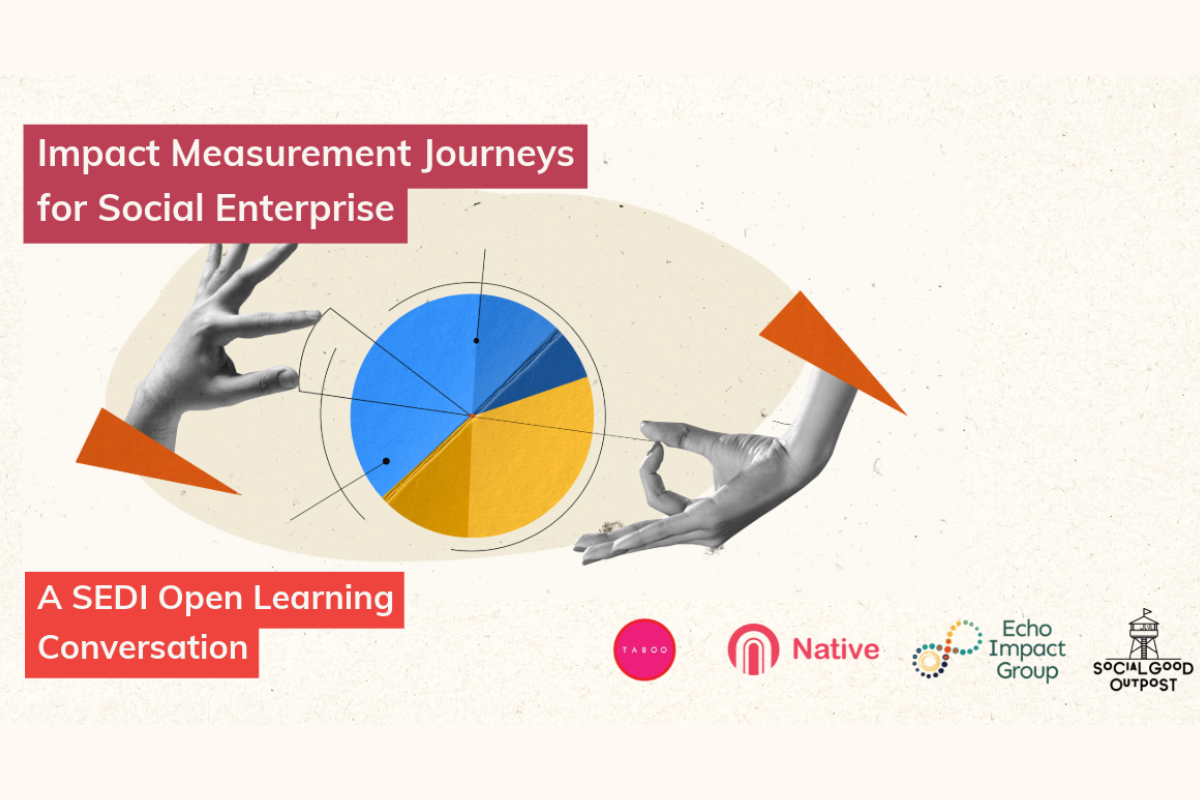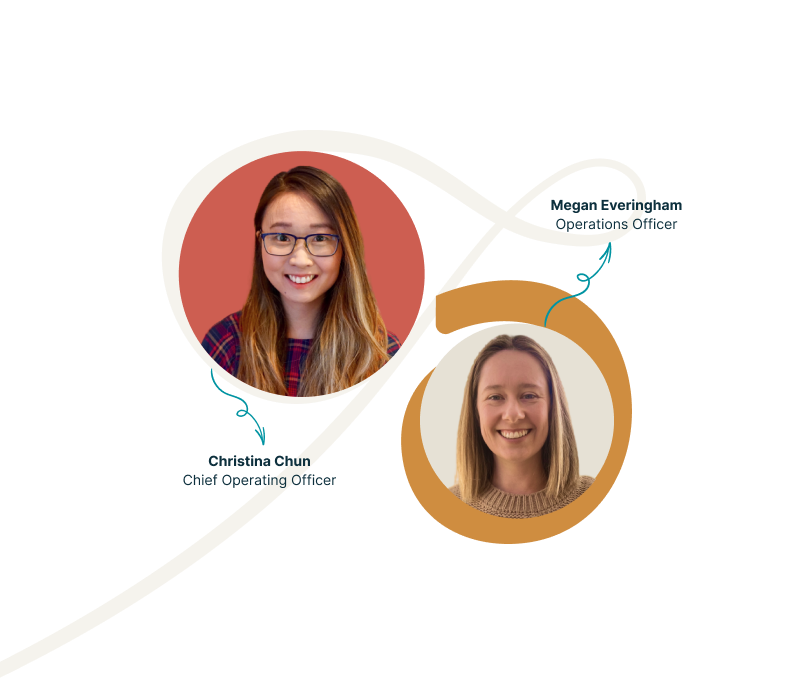
Impact Measurement Journeys for Social Enterprise
Social Good Outpost hosted a webinar sharing how social enterprises begin and evolve their impact measurement. With insights from TABOO, Echo Impact, and Native, the session explored practical ways to track what matters, centre community outcomes, and embed ethical, meaningful measurement into everyday business practice.
Summary
This webinar explores practical strategies and lived experiences from social enterprises measuring their impact, including:
- How to start small and build simple, sustainable habits around impact measurement.
- The value of combining passive metrics (e.g. income generated) with active ones (e.g. stories or feedback from communities).
- Why aligning impact with your business model helps ensure measurement is meaningful and cost-effective.
- Ways to embed data collection into everyday operations without over-burdening clients, staff or partners.
- How impact measurement can strengthen internal culture, guide strategy, and enhance relationships with funders, partners, and customers.
- Using feedback loops and regular check-ins to support ongoing improvement and learning.
- Ethical storytelling practices and the importance of centring dignity, context, and consent in impact communication.
- Tips for balancing financial sustainability and impact delivery through embedded models, hybrid structures, or strategic partnerships.
- Frameworks, tools and reflective practices to help social enterprises clarify their theory of change and identify what to measure and why.
Show notes and quotes
Lara Stephenson: “...while you're making something for the external, you’re learning so much from it internally, because you have to be precise, accurate, and distil a lot of information. It can be such a good strategic tool for looking back and looking forward.”
“...if I can't measure that, what can I measure? What's in my control to measure? It might not be that you can measure the thing that you thought you wanted to measure.”
Iahara Sahama: “What stories are being told internally versus externally? How do you marry the two? And how do people who are part of that, whether they're funders, consumers, customers or whoever they may be, what role do they play in shaping that story?”
“I think storytelling done well is done through various mediums. Whether it's reporting, videos, documentaries, or certain social media campaigns etc. Having a diversified form of how you communicate your impact.”
“Sometimes these difficult conversations need to happen, because social enterprises can't run on goodwill, they need capital. They're just like any other business.”
“Not everything about impact has to be public or external. Impact is a synonym for change. What change are you accounting for or facilitating or enabling?”
Eloise Hall: “I think that's why people are drawn to social enterprise as well, because we've led with humanity and we've led with the why. If we end up getting complicated and confused about the story we want to share, we need to come back to why did this social enterprise start to begin with? Where's the human pull that made us give away secure jobs and dive into this world of solution-making?”
“We're all human and we all have this shared yearning for peace and a humanity that feels safe and prosperous for us all. When it comes to storytelling, that's where this focus should be.”
“I think a lot of social enterprises are beautifully natural at integrating impact into their business. That's where that beautiful sweet spot is, when doing business is doing good.
The social enterprises that really inspire me are the ones that are creative, where the impact is embedded into the day-to-day activity. It's not dependent on certain outcomes to see that impact happen. It just happens as a business.”
“There's also relevance of data collection for your internal staff, especially when staff are tasked with roles and jobs that don't typically see an outcome. If they're really in the data or their activities are sometimes mundane and repetitive, being able to communicate the impact that their contribution to that workplace is having, is so important. That creates a beautiful environment - an environment where people feel proud about the work they're doing.”
“People will relate to different types of impact. For example, we've got a category of customers who are really invested in the environmental aspect of the offering we have. Then another aspect that are more invested in the social. Making sure that information is available so that people can learn and find a place of relation in the way that's most valuable to them.”
Daniel Teoh: “...in the Malaysian context, most social enterprises are thought of like the Silicon Valley model of growth and expansion. That's how we're educated by the system, and I feel like that doesn't really work. It doesn't lead you to focusing on impact, and you end up in this strange dance where you are earning money to do the work, where the work is earning money.”
“I would say that it's typically good practice to de-couple impact being contingent on profit.”
“When we started off, the big metric we always anchored on was the raw amount of income that we were able to generate for communities and also by extension ourselves. I realised that whenever we presented that as the core impact we created, it didn't seem very meaningful from an external perspective.”
“On the topic of impact measurement, my golden metric here in Malaysia is that one day I want to hear an Acknowledgment of Country for the Orang Asli people.”
“...I wrote down every single thing that I wanted to know and that I thought could be a potential indicator. Then I tried to measure it, which did not end very well. I realised early on that it should be something simple, and perhaps the organic way would have been better.”
“I found a good way to think about it when you frame a story is, how would the person that you are supporting feel if they heard your problem statement?”
Explore more
For those who are keen to dive deeper and do differently, here are some links to learnings and resources mentioned by the speakers and/or related to the open learning topic:

We’d love to hear from you!
Reach out to one of our team members, and share input and ideas about how we can evolve Understorey.
Get in touch